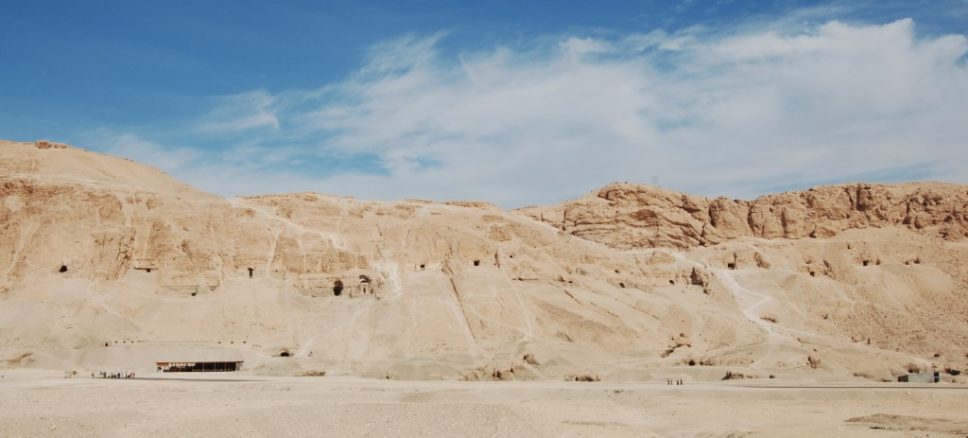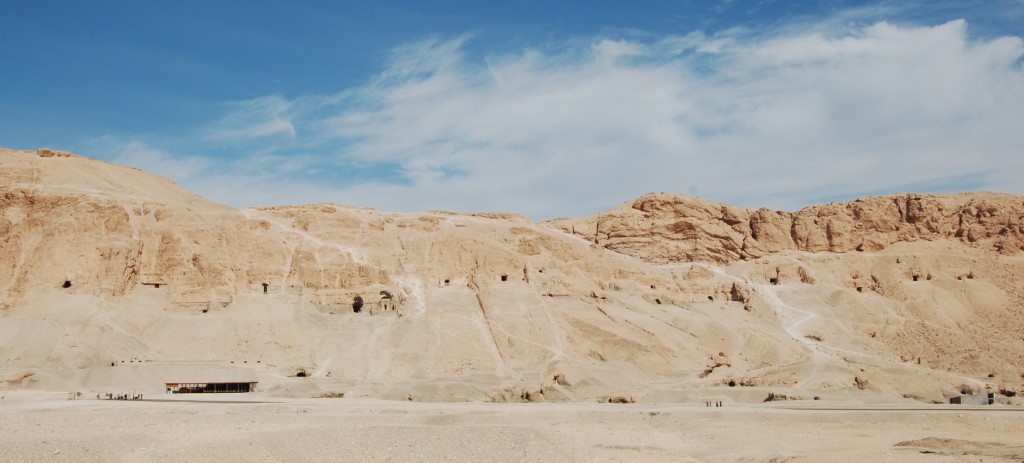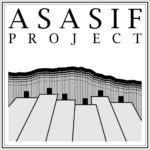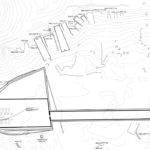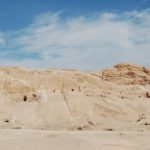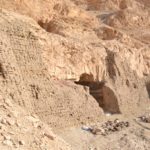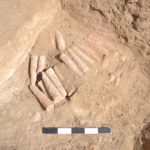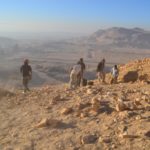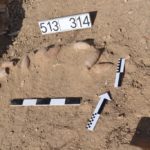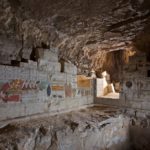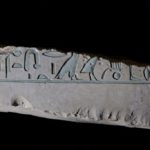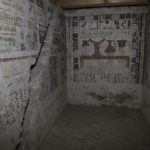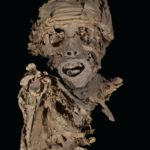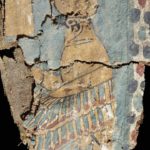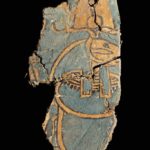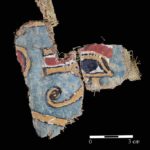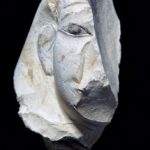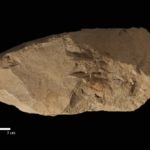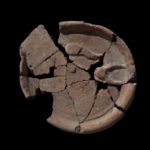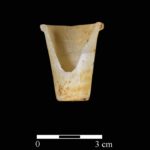North Asasif
-
Project name:
Polish Archaeological Expedition to North Asasif. The Asasif Project
البعثة البولندية الأثرية بشمال العساسيفProject logo:
Project website:
www.templeofhatshepsut.uw.edu.pl
Facebook:
You Tube:
-
Type of site:
Necropolis
UNESCO World Heritage List:
The necropolis is inscribed on the List together with ancient Thebes.
Location:
Egypt
West Thebes
Theban necropolisDating:
– Middle Kingdom
– Tombs were reused from the New Kingdom to the late Roman period
– Absolute dating: 2055–1773 BC
Most interesting finds:
– ruins of a small chapel in the lower part of the courtyard of the mortuary complex of Horhotep (TT 314); the chapel’s furnishings were found in the fill
– fragments of a decorated limestone sarcophagus of Cheti (tomb TT 311)
– fragments of a coffin of Cheti with preserved fragments of Coffin Texts (tomb TT 311)
– clay trays from the Middle Kingdom – a rich assemblage of trays of various forms and shapes was discovered in almost all the tombs
– masonry tools from the Middle Kingdom, mostly limestone hammers
– foundation deposits from the 11th dynasty, including a miniature copper chisel and a travertine vessel (tomb MMA 509)
– richly-decorated cartonnages from the 22nd dynasty, mostly with depictions of gods of the underworld and deceased persons
– deposit of clay cones from the Middle Kingdom
History of research:
Dates of PCMA mission’s work:
2013–
Type of research:
Survey, conservation, documentation
Directors:
Patryk Chudzik (2013–2019)
Anastasiia Stupko-Lubczyńska (2020– )
Co-operating institutions:
– Polish Centre of Mediterranean Archaeology, University of Warsaw
– University of Wrocław (2013–2016)
– Supreme Council of Antiquities (SCA)
Additional information:
Earlier research was conducted by the Supreme Council of Antiquities (SCA) in 1883 under the direction of Gaston Maspero. In the years 1922–1925 and 1925–1927, excavations were carried out by Herbert E. Winlock (a project of the Metropolitan Museum of Art in New York and the Supreme Council of Antiquities). In 2010–2012, Chloe Ragazzoli conducted research under the auspices of Institut français d’archéologie orientale. Initially, the PCMA UW project was realized under the auspices of the Polish-Egyptian Archaeological and Conservation Mission at the Temple of Hatshepsut at Deir el-Bahari.
Description of the site and research:
The project aims to document mortuary complexes from the Middle Kingdom and study their reuse in later times, including architectural changes (Figs 1, 3, 5, 8, 10). Its first stage focuses on documenting the architecture as well as collecting and preserving movable objects found in the courtyards. The study of different groups of finds has been carried out since the first season of work. In the 2014/2015 season, the team started conservation work in the grave chamber of Cheti (TT 311) (Figs 7, 9) and undertook the reconstruction of the decorated walls of the entrance corridor and the limestone sarcophagus.
The research concentrates on the North Asasif necropolis (West Thebes) (Fig. 2), located near the temple of Hatshepsut in Deir el-Bahari. During the Middle Kingdom (2055–1773 BC), the most important Egyptian dignitaries (ministers) of the 11th and 12th dynasty were buried there in large grave complexes. The team explores both the interiors of the tombs (corridors and chambers extending at times 30 m into the mountain) and the courtyards on the rocky slopes. The project encompasses excavation, architectural, documentation and conservation works, as well as studies of different groups of finds (Figs 4, 6, 11–18).
Information about the research:
Season by season – “PCMA Newsletter”:
- 2019 season
- 2018 season
- 2017 season
- 2016 season
- 2015 season
- 2014 season
- 2013 season
Associated events:
2023-02 Opening at the Temple of Hatshepsut in Deir el-Bahari and the Tomb of Meru in North Asasif
2021-02 Lecture in RC Cairo: Latest discoveries in Asasif
2016-10 Exhibition “Secrets of Egyptian tombs” (Wrocław)
Lectures:
18 December 2016, Archaeological Museum in Wrocław
Lecture: Secrets of Egyptian tombs – lecture accompanying the exhibition under the same title
13 January 2016, Institute of Archaeology, University of Wrocław
Lecture: Secrets of Egyptian tombs
27 May 2014, Archaeological Museum in Poznań
Lecture: Recent discoveries of Polish archaeologists in the Asasif necropolis in Egypt
17 May 2014, Oratorium Marianum, University of Wrocław
Lecture: Recent discoveries of Polish archaeologists in Egypt
Stupko-Lubczynska A., (2024). „Light will win over darkness”: Pyramid Texts spells 220-222 in the burial chamber of Meru (TT 240), in: J. Baines, H. Jaritz, M. Tarasenko (eds.), „Nobody can struggle alone”. An Egyptological volume on behalf of Ukraine. Berlin
Karwowska, P. (2023). In the presence of my king forever: Royal images in the tombs of noblemen of the Middle Kingdom and beyond. PAM, 32(2, Regular Issue), 147-169.
Chudzik, P., & Iwaszczuk, U. (2022). “A Crocodile Spirit, Crocodile-Faced”: Discovery of Crocodile Remains in the Early Middle Kingdom Tombs of the North Asasif Necropolis in Western Thebes (Egypt), Journal of African Archaeology. doi: https://doi.org/10.1163/21915784-bja10016
Stupko-Lubczyńska, A. (2021). What an artist saw: Tracing the local iconographic tradition for the Temple of Hatshepsut at Deir el-Bahari. Polish Archaeology in the Mediterranean, 30(1), 187–214.
Chudzik, P. (2020). Middle Kingdom tombs from the North Asasif cemetery: field seasons 2018/2019 and 2020, Polish Archaeology in the Mediterranean 29/2, 167–192.
Campbell, R. (2020). The human remains from tomb MMA 514 in North Asasif, Polish Archaeology in the Mediterranean 29/2, 193–206.
Stupko-Lubczynska, A. (2020). Decorated burial chamber of Meru (TT 240 in Asasif): some remarks on the layout, Polish Archaeology in the Mediterranean 29/2, 207–220.
Campbell, R. A. (2019). Human remains from the Tomb of Khety (MMA 508/TT 311) in North Asasif, Polish Archaeology in the Mediterranean 28/2, 157–173. DOI: 10.31338/uw.2083-537X.pam28.2.10
Chudzik P. (2018). Middle Kingdom tombs of Asasif: archaeological fieldwork in 2017, Polish Archaeology in the Mediterranean, 27(1), 183–194.
Campbell, R. A. (2018). Human Remains from Tomb MMA 514 in North Asasif: Preliminary Assessment, Polish Archaeology in the Mediterranean 27(1), 195–202.
Chudzik, P. (2017). Middle Kingdom Tombs of Asasif – work conducted in 2015/2016 season. Polish Archaeology in the Mediterranean, 26(1), 185–198.
Chudzik, P. & Caban, M. (2017). Observations on the Architecture of the Tomb of Horhotep in Western Thebes, Études et Travaux, 30, 331–339.
Chudzik, P. (2016). Middle Kingdom tombs in Asasif: archaeological activities in 2015. Polish Archaeology in the Mediterranean, 25, 289–301.
Chudzik, P. (2016). Tajemnice egipskich grobowców/ Secrets of Egyptian tombs, Wrocław.
Chudzik, P. (2016). A unique royal mortuary temple and exceptional private complexes. The architecture of the Nebhepetre Mentuhotep II monument reflected in the funerary structures of high officials at Thebes. In M. Ullmann (Ed.), 10. Ägyptologische Tempeltagung: Ägyptische Tempel zwischen Normierung und Individualität. München, 29.31. August 2014, Wiesbaden: 71–80.
Chudzik, P. (2015). The Tombs of Asasif: Archaeological exploration in the 2013/2014 season, Polish Archaeology in the Mediterranean, 24(1), 239–246.
Select literature about earlier research:
Winlock, H.E. (1942). Excavations at Deir el Bahri, 1911–1931 (pp. 68–83, 122–131). New York: The Macmillan Company.
Capart, J. (ed.) (1936). Travels in Egypt (December 1880 to May 1881). Letters of Charles Edwin Wilbour. Brooklyn.
Winlock, H.E. (1928). The Egyptian Expedition 1925–1927: The Museum’s excavations at Thebes. Bulletin of the Metropolitan Museum Art, 23(2), 11–18.
Winlock, H.E. (1923). The Museum’s excavations at Thebes. In the Egyptian Expedition, 1922–1923. Bulletin of the Metropolitan Museum of Art, 24(2), 11–22.
Winlock, H.E. (1922). Excavations at Thebes. In the Egyptian Expedition, 1921–1922. Bulletin of the Metropolitan Museum of Art, 17(2), 32–49.
Maspero, G. (1906). Guide to the Cairo Museum. Cairo.
Maspero, G. (1889) Trois années de fouilles dans les tombeaux de Thèbes et de Memphis. MIFAO, 1, 133–242.
Gallery:
-
1. Mortuary complex of Nebhepetre Mentuhotep II in Deir el-Bahari and graves of dignitaries in the Asasif necropolis / Zespół świątynno-grobowy Nebhepetre Mentuhotepa II w Deir el-Bahari i grobowce dostojników na nekropoli Asasif Północny (rys. K. Andraka)
-
2. North Asasif necropolis, view from the south / Nekropola Asasif Północny, widok z południa (fot. P. Chudzik)
-
3. Brick facade with the entrance in the central part leading to the interior of tomb MMA 515, Middle Kingdom / Ceglana fasada z wejściem w centralnej części prowadzącym do wnętrza grobowca MMA 515, Średnie Państwo (fot. P. Chudzik)
-
4. Deposit of clay cones discovered in the eastern corner of the facade of tomb MMA 515, Middle Kingdom / Depozyt stożków glinianych odkryty we wschodnim narożniku fasady grobowca MMA 515, Średnie Państwo (fot. P. Chudzik)
-
5. The discovery of a tomb inside the courtyard of the funerary complex of Horhotep (TT 214), Middle Kingdom / Odkrycie grobowca towarzyszącego w obrębie dziedzińca zespołu grobowego Horhotepa (TT 314), Średnie Państwo (fot. M. Sieradzka)
-
6. Deposit of clay vessels discovered near the ruins of a small chapel. Funerary complex of Horhotep (TT 314), Middle Kingdom / Depozyt naczyń glinianych odkryty w sąsiedztwie ruin kapliczki. Zespół grobowy Horhotepa (TT 314), Średnie Państwo (fot. P. Chudzik)
-
7. Decoration on plaster in the funerary chapel of Cheti (TT 311), Middle Kingdom / Dekoracja na tynku w kaplicy kultu grobowego Chetiego (TT 311), Średnie Państwo (fot. M. Jawornicki)
-
8. Decorated grave chamber of Cheti (TT 311), Middle Kingdom / Dekorowana komora grobowa Chetiego (TT 311), Średnie Państwo (fot. M. Jawornicki)
-
9. Decorated block fragment discovered in the tomb of Cheti (TT 311), Middle Kingdom / Fragment bloku z dekoracją odkryty w grobowcu Chetiego (TT 311), Średnie Państwo (fot. M. Jawornicki)
-
10. Sarcophagus of Meru, Middle Kingdom / Sarkofag Meru, Średnie Państwo (fot. M. Jawornicki)
-
11. Fragment of a mummified human body discovered inside tomb MMA 509 / Fragment zmumifikowanego ciała ludzkiego odkryty we wnętrzu grobowca MMA 509 (fot. M. Jawornicki)
-
12. Falcon with a sun disc on its head and a shen symbol in its claws, cartonnage painting, 22nd dynasty, tomb MMA 509 / Sokół z dyskiem słonecznym na głowie i symbolem szen w szponach, malowidło na kartonażu, XXII dynastia, grobowiec MMA 509 (fot. M. Jawornicki)
-
13. God Ra as a scarab with ram’s head, cartonnage painting, 22nd dynasty, tomb MMA 509 / Bóg Ra jako skarabeusz z głową barana, malowidło na kartonażu, XXII dynastia, grobowiec MMA 509 (fot. M. Jawornicki)
-
14. Udjat eye, cartonnage painting, 22nd dynasty, tomb MMA 509 / Oko udżat, malowidło na kartonażu, XXII dynastia, grobowiec MMA 509 (fot. M. Jawornicki)
-
15. Lid of a canopic jar in the form of a head of one of the four Sons of Horus (Imseti), 18th dynasty, tomb MMA 514 / Pokrywa urny kanopskiej przedstawiająca głowę jednego z czterech Synów Horusa (Imseti), XVIII dynastia, grobowiec MMA 514 (fot. M. Jawornicki)
-
16. Limestone hammer, Middle Kingdom, tomb MMA 509 / Wapienny młot, Średnie Państwo, grobowiec MMA 509 (fot. M. Jawornicki)
-
17. Clay votive tray with representations of offerings: head, legs and ribs of an ox and breads, Middle Kingdom, tomb MMA 512 / Gliniana taca ofiarna z wyobrażeniami darów: głowy, nóg i żeber wołu oraz chlebami, Średnie Państwo, grobowiec MMA 512 (fot. K. Pepke)
-
18. Miniature travertine vessel, probably from a foundation deposit, Middle Kingdom, tomb MMA 509 / Miniaturowe naczynie z trawertynu prawdopodobnie pochodzące z depozytu fundacyjnego, Średnie Państwo, grobowiec MMA 509 (fot. M. Jawornicki)

